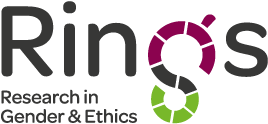mHealth and sexual and reproductive health rights
Ed: This post first appeared on the Interactions website. Thanks for allowing us to cross post.
Linda Waldman and Marion Stevens
Few people doubt that information and communications technology (ICT) innovation offers massive potential for changing the way health is delivered and health systems operate. The possibilities seem infinite – earlier this month it was announced that smart phones will soon be able to offer an HIV or Syphilis diagnosis, just as accurate as laboratory blood tests, and in only 15 minutes.
There are already many successful mHealth (health initiatives typically involving mobile phones) programmes and pilots such as the Mobile Alliance for Maternal Action, or MAMA, which operates in Bangladesh, South Africa and India. MAMA uses social networking and mobile services to provide pregnant women and new mothers with stage-relevant health information. There is considerable excitement – with good reason – around the potential for mobile phones to provide solutions to health system challenges and to address the needs of poor women around the world.
Yet ICTs embody a dual promise. They facilitate increasing commercialisation and privatisation with the general exclusion of women and social development values, while simultaneously offering great potential to subvert these same hierarchies and exclusions. This Janus-faced characteristic – of upholding power relations and simultaneously subverting them – makes ICT technology an incredibly powerful and attractive tool. And, because it is available throughout the developing world, mobile phone technology is the most attractive of all. So, given this possibility of both subverting and reinforcing, what are some of the hidden power relations and challenges around the use of mHealth for SRHRs? Drawing from new IDS research exploring the intersection between sexual and reproductive health rights (SRHR) and technological means of enhancing health, the key points are:
Privacy
As long as people don’t have to share phones and are literate, mHealth offers fantastic opportunities to ensure that patients’ privacy is protected. Health workers can relate directly to the patient and share confidential information which the patient can revisit and reread in his or her own time. In addition, mHealth allows people – especially young adolescents – the opportunity to ask questions anonymously.
This provides them with protection while enquiring about stigmatised or taboo behaviours. But, while mHealth protects the patient’s information from friends and family, it also disseminates information to telecommunication companies and private companies that fund these projects. As long as the messages are relayed through SMS (Short Message Service) formatting or through mobile platforms online, companies can access a wealth of information about the people using the platforms or services. This includes names, ages, numbers of children, sexual interests, health and illness. How this information is used is not obvious and the long-term consequences of tailored marketing for the poor, on issues of sexuality, pregnancy and ill-health, have yet to be explored.
Hardware deficits
One of the main attractions of mHealth is its ability to supplement the lack of health services and health information in rural and remote areas. Mobile phones, now ubiquitous throughout low- and middle-income countries, offer an attractive combination of speed and remote telecommunication technology. Telemedicine, referrals, health apps and the provision of timely information can all help poor rural communities, reducing the need for clinic visits and out-of-pocket health expenses.
Yet, while many of the rural poor (particularly men) might own mobile phones, there are few political or financial incentives to address the hardware deficits. There remains a lack of broadband connectivity in many rural areas as privately-owned telecommunication companies benefit little from ensuring infrastructural developments in ‘the last mile’ and governments do little to help women access and own mobile phones. Without political will, or incentives, will mHealth create new forms of rural health inequity?
Limits of one-way health information
Mobile phones are great for sending out information, either as SMS or as IVR (Interactive Voice Response). Much of this information focuses on Maternal and Child Health, with the real success stories in mHealth being around pregnancy and child birth. The information which mothers receive through mobile phones and apps focuses almost entirely of medical and official understandings of pregnancy and childbirth.
There is little awareness of local information, of mothers’ own understandings of health or pregnancy. In this world of mHealth, women and mothers’ understandings and knowledge about their own bodies is not acknowledged. In addition, much of this information focuses on motherhood and childbirth, with far less attention to controversial topics such as sexual orientation, abortion, contraception, and sex-positive work within a Sexual and Reproductive Health Rights framework.
Adolescents’ sexuality and safe spaces
Online there are lots of forums and platforms for adolescents to find out about sexuality and associated health issues. Available on both smart and feature phones, these spaces offer opportunities for youth to ask questions anonymously, to experiment with their identity and sexuality and to receive related health information from experts. As such, this might be construed as a relatively safe space. However, these online spaces are also areas of sexual predation. Many providers constantly monitor the discussions and shut down communications when ‘things get raunchy’.
There is no official guidance on the use of ICTs for the provision of adolescent sexuality information and the sites tend to me moderated by technical as opposed to content experts. Finally, there is little opportunity or incentive for the developers of these online platforms to follow up with health-related information around contested areas (abortion, contraception, porn) or to better connect online forums with health systems.
ICTs and mobile phones have already changed our world and more transformation lies on the horizon. But will mobile phones provide solutions to health system challenges and address the needs of poor women around the world? The answer lies in whether we can address underlying power relations, recognise hidden challenges and foresee long-term unanticipated consequences.
By Linda Waldman (IDS) and Marion Stevens (WISH Associates and Africa Gender Institute, University of Cape Town)
Find out more
‘Sexual and Reproductive Health Rights and Information and Communications Technologies: A Policy Review and Case Study from South Africa’, IDS Evidence Report 113 (2015).
Photo courtesy of dotpolka.

